Paraconsistent Annotated Logic Algorithms Applied in Management and Control of Communication Network Routes
Abstract
1. Introduction
Organization
2. Related Works
3. Paraconsistent Logic
3.1. Paraconsistent Annotated Logic with Annotation of Two Values (PAL2v)
3.1.1. Algorithm for Extracting Degrees of Evidence
| Algorithm 1: Extracting degrees of evidence: ext_deg_of_evid (measure_x_value, min_value, max_value) |
| {Reading of measure_x_value, min_value and max_value} {Calculation of mi_x} If (measure_x_value >= max_value) then mi_x ← 1 ; { Value equal to 1} end_if if (measure_x_value <= min_value) then mi_x ← 0 ; { Value equal to 0} end_if if (measure_x_value > min_value) && (measure_x_value < max_value) then mi_x ← (measure_x_value-min_value)/(max_value-min_value); { Value between 0 and 1} end_if {Return to mi_x in the output algorithm} return (“mi_x”) Note: mi_x = evidence degree (µ) |
3.1.2. Paraconsistent Analysis Node (PAN) Algorithm
| Algorithm 2: Paraconsistent analysis node (PAN): input: (mi, lambda), output: mi_er |
|
{ Reading of the “mi” and “lambda” } { Initial Calculations } {Calculation of the contradiction degree } dg_dct ←(mi + lambda)−1; { contradiction degree value} { Calculation of the uncertaity degree } dg_dc ← mi–lambda; { uncertainty degree value } { Calculation of the d distance } d ← sqrt((1−| dg_dc|)^2 + (dg_dct)^2); { distance value } { Determination of the Real certainty degree } if (dg_dc >= 0) then dg_cr ← (1−d) ; { Real certainty degree value } end_if if (dg_dc < 0) then dg_cr ← (d−1) ; { Real certainty degree value } end_if { Determination of the Resulting evidence degree } mi_er ← (dg_cr + 1)/2; { Resulting evidence degree value} end_if {Return of the Resulting evidence degree in the output algorithm } return (“mi_er”) return (“mi_x”) Note: mi_x = favorable evidence degree (µ); lambda = unfavorable evidence degree (λ); dg_dct = contradiction degree (Dct); dg_dc = certainty degree (Dc); dg_cr = certainty degree of a real value (DCR); mi_er = resulting evidence degree (μER). |
3.1.3. Algorithm for Extraction of Contradiction Effects
| Algorithm 3: Extractor of contradiction effects: input: (vector_mi[mi_1, ..., mi_n ], n), output: mi_er_final |
| {Vector reading with “mi_1” to “mi_n, that is, n degrees of evidence at the input of the algorithm; Reading the n value} {Algorithm Initial Calculations} index_mi_max ← 0; index_mi_min ← 0; mi_parcial ← 0; lambda_parcial ← 0; mi_er_final ← 0; mi_er_parcial ← 0; busy ← 0; For i = 1:(n−1) do {Reset control variable references} mi_max ← 0; mi_min ← 1000; busy ← 0; for j = 1:n do if ((vector_mi[j] > mi_max) && (vector_mi[j] ~= −1)) then mi_max ← vector_mi[j]; { highest mi value of mi_vector } index_ mi_max ←j; end_if if ((vector_mi[j] < mi_min) && (vector_mi[j] ~= −1)) then mi_min ← vetor_mi[j]; { smallest mi value of mi_vector } index_ mi_min ←j; end_if end_for { Deleting mi_min and mi_max from vector_mi } vetor_mi[index_ mi_min]← −1; vetor_mi[index_ mi_max]← −1; { Calculation of mi_resulting } mi_parcial ← mi_max; { Value from mi_partial to mi_max } { Calculation of lambda__resulting} lambda_parcial ← 1-mi_min; {value from partial_lambda to mi_min} { Determination of mi_er_resulting } mi_er_parcial = PAN (mi_parcial, lambda_parcial); {Value of mi_er_partial for mi_min and mi_max} for k = 1:n do if ((vector_mi[k] == −1) && (busy == 0)) then vector_mi[k] ← mi_er_parcial; {Insertion of mi_er_partial in vector_mi} busy ← 1; end_if end_for if i = (n−1) then mi_er_final ← mi_er_partial; {Value of mi_re_final} end_if end_for { Return of the resulting evidence degree from the output algorithm } return (“mi_er_final”); Note: (vector_mi[mi_1, ..., mi_n ], n) = set of evidence degrees (Gµ); mi_er_final = final evidence degree (µE). |
3.1.4. Complexity of Paraconsistent Algorithms
3.1.5. Overview of a Routing Management System (RMS) with Paraconsistent Algorithms
4. Materials and Methods
4.1. Information Sources for Paraconsistent Data
- (a)
- Communication route latency time (RTT)
- (b)
- Packet loss (PEP)
- (c)
- Variation in transmission delay (jitter-SD)
- (d)
- Variation in reception delay (jitter-DS)
- (e)
- Processing consumption (CPU) in a database originated from the real-time collection of signals obtained by the sensors of the interconnection equipment
4.2. Paraconsistent Data Analyzer (PDAPAL2v)
4.2.1. PANet Configuration
- − Jitter source/destination (JITTER-SD): μ1 = favorable evidence
- − Jitter destination/source (JITTER-DS): μ2 = unfavorable evidence
- − Round-trip time (RTT-Avg): μ3 = favorable evidence
- − Busy CPU processing consumption (CPU-Busy1min): μ4 = unfavorable evidence
- − Real resulting evidence degree obtained in PAN P1μ5 = favorable evidence μErP1
- − PEP-packet loss ratio (PEP-Ratio): μ6 = unfavorable evidence
- − Real resulting evidence degree obtained in PAN P3: μ7 = favorable evidence μErP3
- − Real resulting evidence degree obtained in PAN P2: μ8 = unfavorable evidence μErP2
4.2.2. PDAPAL2v Operation
- (a)
- Normalization
- (b)
- Initial Paraconsistent Logical Treatment
- (c)
- Extraction of contradiction effects
4.2.3. Comparison and Decision Making
4.2.4. PDAPAL2v Interface and Architecture of a Data Network
- (a)
- Jitter (destination/source) signal (JITTER-DS): minimum = 10 ms and maximum = 30 ms
- (b)
- Jitter (source/destination) signal (JITTER-SD): minimum = 10 ms and maximum = 30 ms
- (c)
- Packet loss signal (PEP-Ratio): minimum = <1% and maximum = 8%
- (d)
- Round-trip time signal (RTT-Avg): minimum = 160 ms and maximum = 680 ms
- (e)
- CPU usage signal (CPU-Busy1min): minimum = 10% and maximum = 90%
4.2.5. Comparative Tests with Conventional Algorithm
4.2.6. Functional Tests
- (a)
- All active and functional interconnection nodes
- (b)
- Network of origin: SITE-1 (172.100.100.0)
- (c)
- Destination network: SITE-2 (172.200.100.0)
- (d)
- Number of pre-readings for the execution of the last step of the paraconsistent controller: 10
- (e)
- Interval between readings: 1 min
- (f)
- Higher traffic volume in the selected communication route
- (g)
- Higher CPU usage in the equipment
- (h)
- Lower limit of modeling of the CPU signal: 10%
- (i)
- Upper limit of modeling of the Jitter signal: 30 ms
5. Results
5.1. Direct Comparative Tests Results
5.2. Functional Tests Results
5.3. Example 1: Functional Results of the Paraconsistent Data Analyzer (PDAPAL2v)
5.4. Example 2: Functional Results of the Paraconsistent Data Analyzer (PDAPAL2v)
6. Discussion
7. Conclusions
Future Works
Author Contributions
Funding
Institutional Review Board Statement
Informed Consent Statement
Data Availability Statement
Conflicts of Interest
References
- Dignum, F.; Greaves, M. Issues in Agent Communication. In Lecture Notes in Computer Science; Dignum, F., Greaves, M., Eds.; Springer: Berlin/Heidelberg, Germany, 2000; Volume 1916. [Google Scholar] [CrossRef]
- Miller, S.L.; Childers, D. Introduction. In Probability and Random Processes; Scott, L.M., Donald, C., Eds.; Academic Press: Cambridge, MA, USA, 2004; pp. 1–6. ISBN 9780121726515. [Google Scholar] [CrossRef]
- Tanenbaum, A.S.; Wetherall, D.J. Computer Networks, 5th ed.; Pearson: London, UK, 2010. [Google Scholar]
- Kułacz, Ł.; Kliks, A.; Kryszkiewicz, P.; Bossy, B. Dynamic Transmit Profile Selection in Dense Wireless Networks. Sensors 2020, 21, 134. [Google Scholar] [CrossRef]
- Wei, H.; Zhang, S.; He, X. Shortest Path Algorithm in Dynamic Restricted Area Based on Unidirectional Road Network Model. Sensors 2020, 21, 203. [Google Scholar] [CrossRef]
- Fortz, B.; Rexford, J.; Thorup, M. Traffic engineering with traditional IP routing protocols. IEEE Commun. Mag. 2002, 40, 118–124. [Google Scholar] [CrossRef]
- Garg, V.K.; Wang, Y.-C. Communication Network Architecture. In The Electrical Engineering Handbook; Wai-Kai, C., Ed.; Academic Press: Cambridge, MA, USA, 2005; pp. 989–1003. [Google Scholar]
- Oida, K.; Sekido, M. An agent-based routing system for QoS guarantees. In Proceedings of the IEEE International Conference on Systems, Man, and Cybernetics, Tokyo, Japan, 12–15 October 1999; pp. 833–838. [Google Scholar]
- Smith, D.K.; Ahuja, R.K.; Magnanti, T.L.; Orlin, J.B. Network Flows: Theory, Algorithms, and Applications. J. Oper. Res. Soc. 1994, 45, 1340. [Google Scholar] [CrossRef]
- Da Costa, N.C.A.; Abe, J.M.; Subrahmanian, V.S. Remarks on annotated logic. Z. Math. Logik Grundl. Math. 1991, 37, 561–570. [Google Scholar]
- Da Silva Filho, J.I.; Lambert-Torres, G.; Abe, J.M. Uncertainty Treatment Using Paraconsistent Logic—Introducing Paraconsistent Artificial Neural Networks; IOS Press: Amsterdam, The Netherlands, 2010; p. 320. ISBN 978-1-60750-557-0. [Google Scholar]
- Heusse, M.; Snyers, D.; Guérin, S.; Kuntz, P. Adaptive Agent-Driven Routing and Load Balancing in Communication Networks. Adv. Complex Syst. 1998, 1, 237–254. [Google Scholar] [CrossRef]
- Seyfollahi, A.; Ghaffari, A. A lightweight load balancing and route minimizing solution for routing protocol for low-power and lossy networks. Comput. Networks 2020, 179, 107368. [Google Scholar] [CrossRef]
- Li, T.; Li, X. Novel alarm correlation analysis system based on association rules mining in telecommunication networks. Inf. Sci. 2010, 180, 2960–2978. [Google Scholar] [CrossRef]
- Egilmez, H.E.; Dane, S.T.; Bagci, K.T.; Tekalp, A.M. OpenQoS: An OpenFlow controller design for multimedia delivery with end-to-end Quality of Service over Software-Defined Networks. In Proceedings of the 2012 Asia Pacific Signal and Information Processing Association Annual Summit and Conference, Hollywood, CA, USA, 3 March 2012; pp. 1–8. [Google Scholar]
- Ii, H.O.; Durresi, A.; Owens, H. Video over Software-Defined Networking (VSDN). In Proceedings of the 2013 16th International Conference on Network-Based Information Systems, Gwangju, Korea, 4–6 September 2013; pp. 44–51. [Google Scholar]
- Govindarajan, K.; Meng, K.C.; Ong, H.; Tat, W.M.; Sivanand, S.; Leong, L.S. Realizing the Quality of Service (QoS) in Software-Defined Networking (SDN) based Cloud infrastructure. In Proceedings of the 2014 2nd International Conference on Information and Communication Technology (ICoICT), Bandung, Indonesia, 28–30 May 2014; pp. 505–510. [Google Scholar]
- Seddiki, M.; Shahbaz, M.; Donovan, S.; Grover, S.; Park, M.; Feamster, N.; Song, Y. FlowQoS: PerFlow Quality of Service for Broadband Access Networks. 2015. Available online: https://smartech.gatech.edu/handle/1853/53190 (accessed on 23 May 2021).
- Karaman, M.; Gorkemli, B.; Tatlicioglu, S.; Komurcuoglu, M.; Karakaya, O. Quality of service control and resource priorization with software defined networking. In Proceedings of the 1st IEEE Conference on Network Softwarization (NetSoft), London, UK, 13–17 April 2015. [Google Scholar]
- Shafique, M.A.; Baloch, N.K.; Baig, M.I.; Hussain, F.; Bin Zikria, Y.; Kim, S.W. NoCGuard: A Reliable Network-on-Chip Router Architecture. Electronics 2020, 9, 342. [Google Scholar] [CrossRef]
- Yang, Z.; Cui, Y.; Li, B.; Liu, Y.; Xu, Y. Software-Defined Wide Area Network (SD-WAN): Architecture, Advances and Opportunities. In Proceedings of the 2019 28th International Conference on Computer Communication and Networks (ICCCN), Valencia, Spain, 29 July–1 August 2019; pp. 1–9. [Google Scholar] [CrossRef]
- Pena, E.H.M.; Barbon, S.; Rodrigues, J.J.P.C.; Proença, M.L., Jr. Anomaly detection using digital signature of network segment with adaptive ARIMA model and Paraconsistent Logic. In Proceedings of the 2014 IEEE Symposium on Computers and Communications (ISCC), Funchal, Portugal, 23–26 June 2014; pp. 1–6. [Google Scholar]
- Pena, E.H.M.; Carvalho, L.F.; Barbon, P.C.S., Jr.; Rodrigues, M.L.P. Anomaly detection using the correlational paraconsistent machine with digital signatures of network segment. Inf. Sci. 2017, 420, 313–328. [Google Scholar] [CrossRef]
- de Carvalho, A.; Justo, J.F.; Angelico, B.A.; de Oliveira, A.M.; Da Silva Filho, J.I. Rotary Inverted Pendulum Identification for Control by Paraconsistent Neural Network. IEEE Access 2021, 9, 74155–74167. [Google Scholar] [CrossRef]
- Da Cruz, C.M.; Rocco, A.; Mario, M.C.; Garcia, D.V.; Lambert-Torres, G.; Abe, J.M.; Torres, C.R.; Da Silva Filho, J.I. Application of Paraconsistent Artificial Neural Network in Statistical Process Control acting on voltage level monitoring in Electrical Power Systems. In Proceedings of the 2015 18th International Conference on Intelligent System Application to Power Systems (ISAP), Porto, Portugal, 11–16 September 2015; pp. 1–6. [Google Scholar]
- Da Silva Filho, J.I.; Da Cruz, C.M. A Method with Paraconsistent Partial Differential Equation used in Explicit Solution of one-dimensional Heat Conduction. IEEE Lat. Am. Trans. 2016, 14, 1842–1848. [Google Scholar] [CrossRef]
- Garcia, D.V.; Da Silva Filho, J.I.; Silveira, L.; Pacheco, M.T.T.; Abe, J.M.; Carvalho, A.; Blos, M.F.; Pasqualucci, C.A.G.; Mario, M.C. Analysis of Raman spectroscopy data with algorithms based on paraconsistent logic for characterization of skin cancer lesions. Vib. Spectrosc. 2019, 103, 102929. [Google Scholar] [CrossRef]
- Da Silva Filho, J.I.; Camargo, J.M.; Santos, M.R.; Onuki, A.; Mario, M.; Ferrara, L.; Garcia, D.; Pereira, J.; Rocco, A. Support at Decision in Electrical Systems of subtransmission through selection of Topologies by a Paraconsistent Simulator. IEEE Lat. Am. Trans. 2016, 14, 1993–1999. [Google Scholar] [CrossRef]
- Coelho, M.S.; Da Silva Filho, J.I.; Côrtes, H.M.; de Carvalho, A.; Blos, M.F.; Mario, M.C.; Rocco, A. Hybrid PI controller constructed with paraconsistent annotated logic. Control. Eng. Pract. 2019, 84, 112–124. [Google Scholar] [CrossRef]
- Da Silva Filho, J.I.; Lambert-Torres, G.; Ferrara, L.F.P.; Mário, M.C.; dos Santos, M.R.; Onuki, A.S.; Camargo, J.D.M.; Rocco, A. Paraconsistent Algorithm Extractor of Contradiction Effects—Paraextrctrctr. J. Softw. Eng. Appl. 2011, 04, 579–584. [Google Scholar] [CrossRef]
- Favieiro, G.W.; Balbinot, A. Paraconsistent Random Forest: An Alternative Approach for Dealing with Uncertain Data. IEEE Access 2019, 7, 147914–147927. [Google Scholar] [CrossRef]
- Da Silva Filho, J.I. Treatment of Uncertainties with Algorithms of the Paraconsistent Annotated Logic. J. Intell. Learn. Syst. Appl. 2012, 4, 144–153. [Google Scholar] [CrossRef][Green Version]
- Da Silva Filho, J.I.; Caetano, I.D.S.; Pontes, F.N.; Mario, M.C.; Abe, J.M.; Giordano, F. Paraconsistent Logic Algorithms Applied to Seasonal Comparative Analysis with Biomass Data Extracted by the Fouling Process. Paraconsistent Intelligent-Based Systems—New Trends in the Applications of Paraconsistency; Springer: Berlin/Heidelberg, Germany, 2015; pp. 131–151. [Google Scholar]
- Da Silva Filho, J.I.; Nunes, C.V.; Garcia, D.V.; Mario, M.C.; Giordano, F.; Abe, J.M.; Pacheco, M.T.T.; Silveira, L., Jr. Paraconsistent analysis network applied in the treatment of Raman spectroscopy data to support medical diagnosis of skin cancer. Med. Biol. Eng. Comput. 2016, 54, 1453–1467. [Google Scholar] [CrossRef] [PubMed]
- McCabe, T.J. A Complexity Measure. IEEE Trans. Softw. Eng. 1976, 308–320. [Google Scholar] [CrossRef]
- Shanthi, V.; Jeevana, P.; Chaithanya, G.K.; Thirumalai, C. Evaluation of McCabe’s cyclomatic complexity metrics for secured medical image. In Proceedings of the 2017 International Conference on Trends in Electronics and Informatics (ICEI), Tirunelveli, India, 11–12 May 2017; pp. 1122–1126. [Google Scholar]
- Nascimento, M.R.D.; Dias, L.A.V.; Da Silva Filho, J.I. An Application of Paraconsistent Annotated Logic for Design Software Testing Strategies. J. Softw. Eng. Appl. 2014, 7, 371–386. [Google Scholar] [CrossRef]

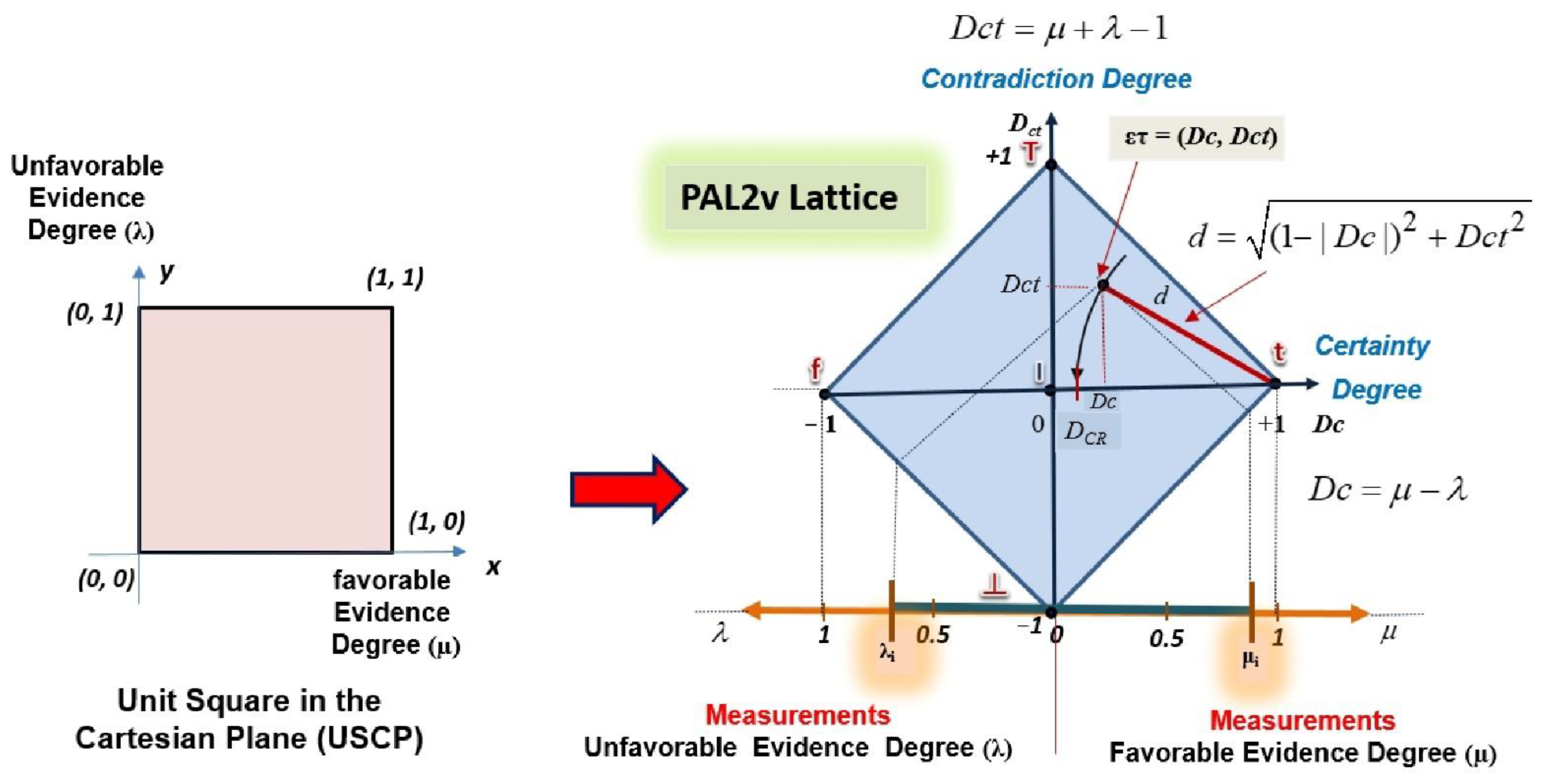
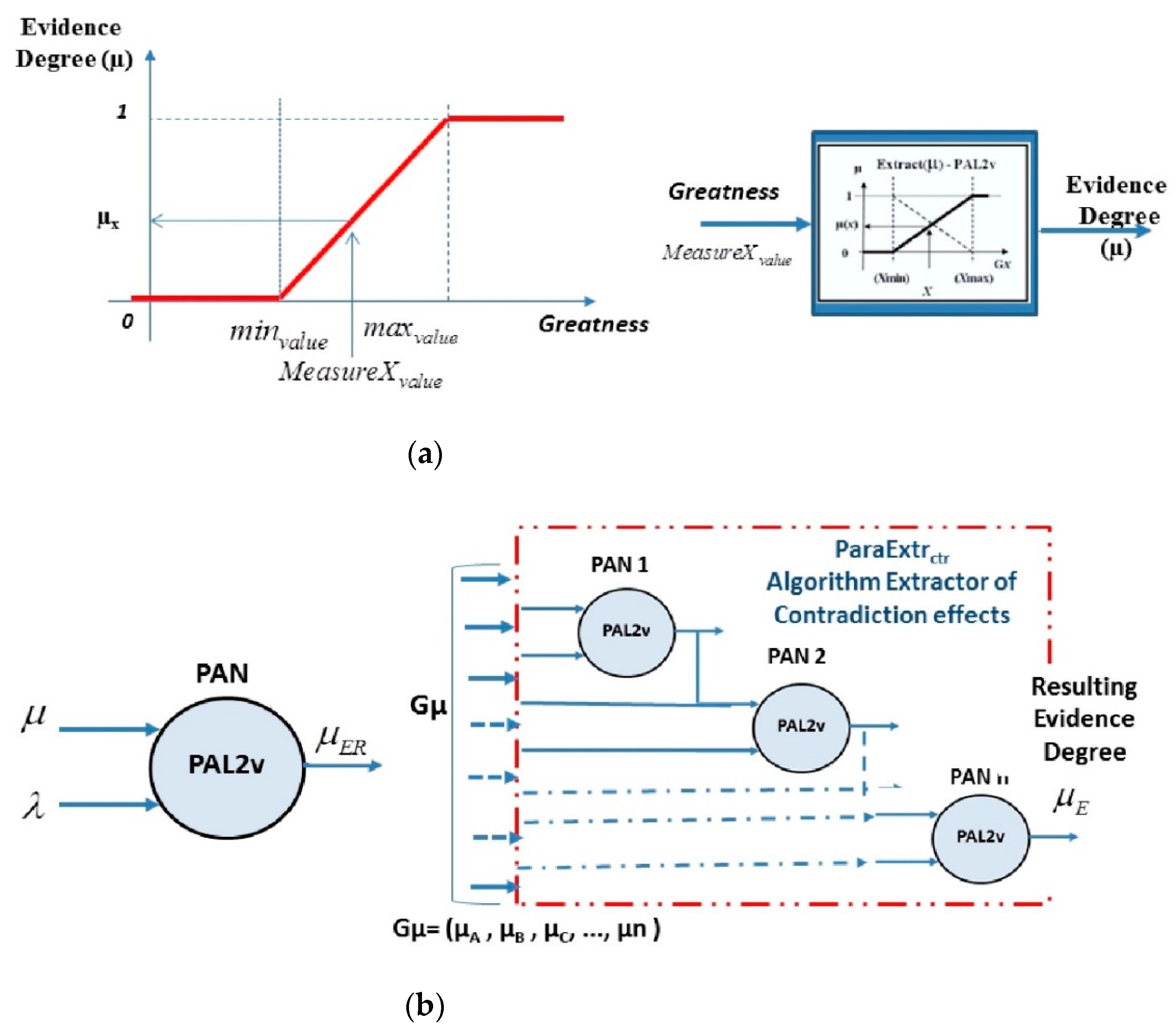
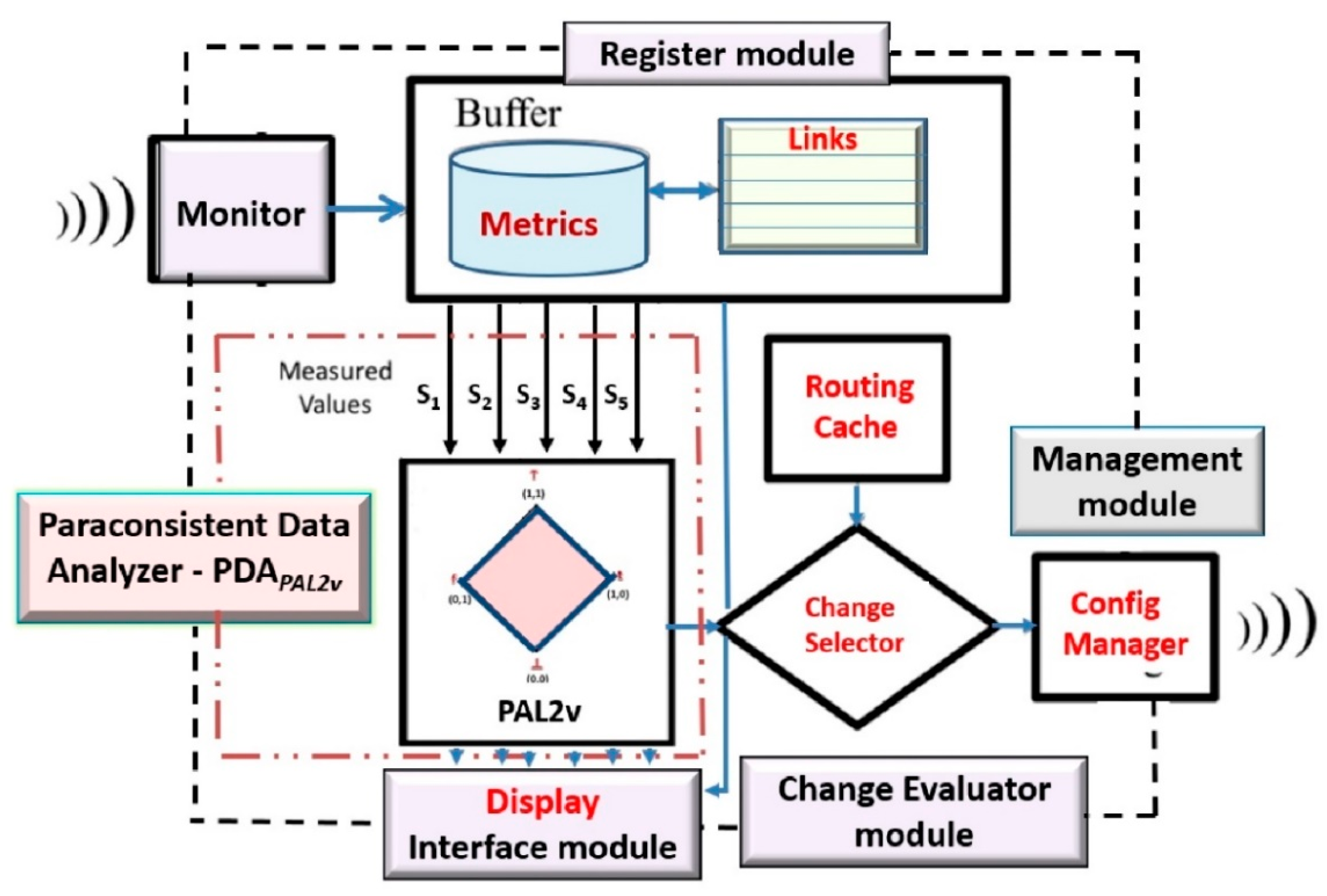

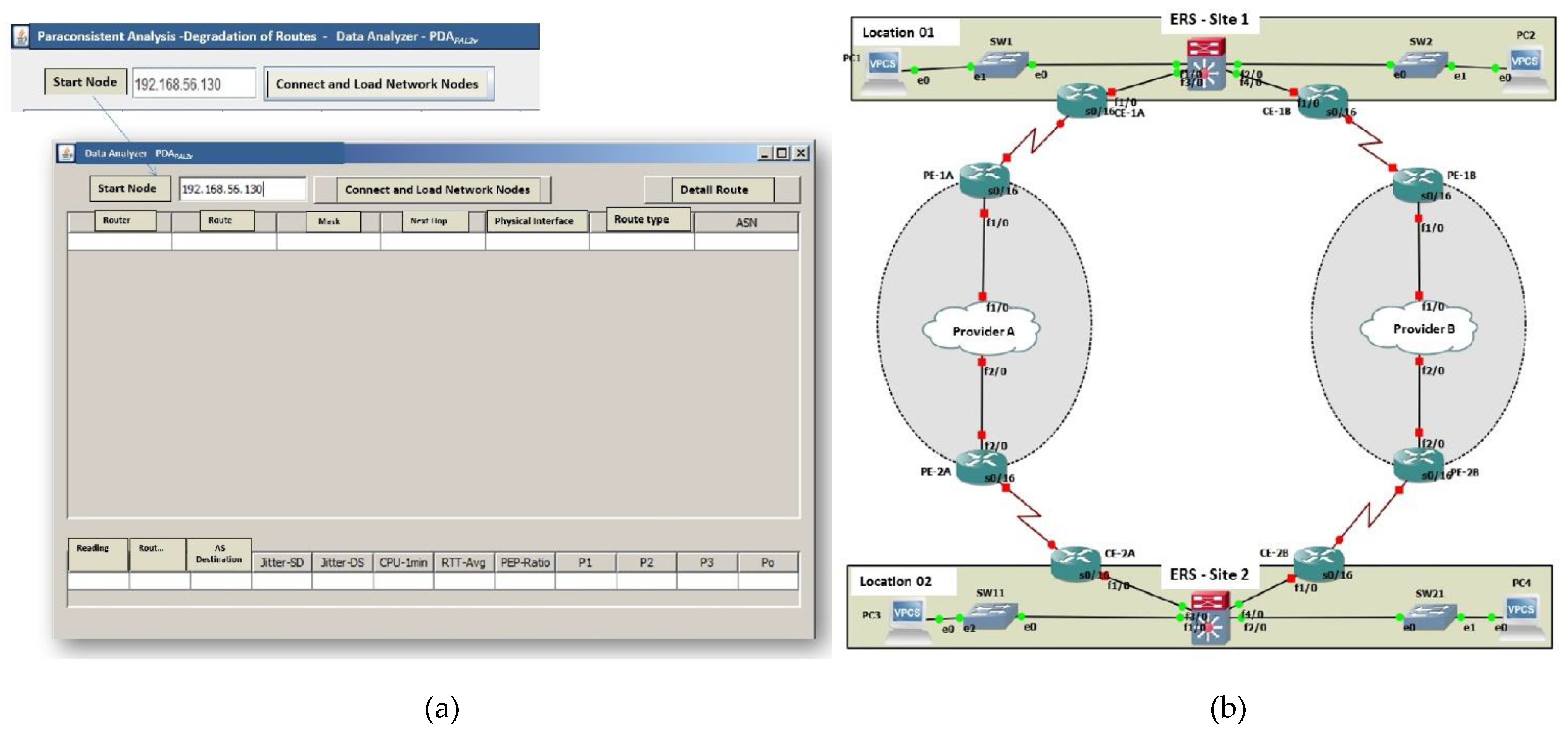
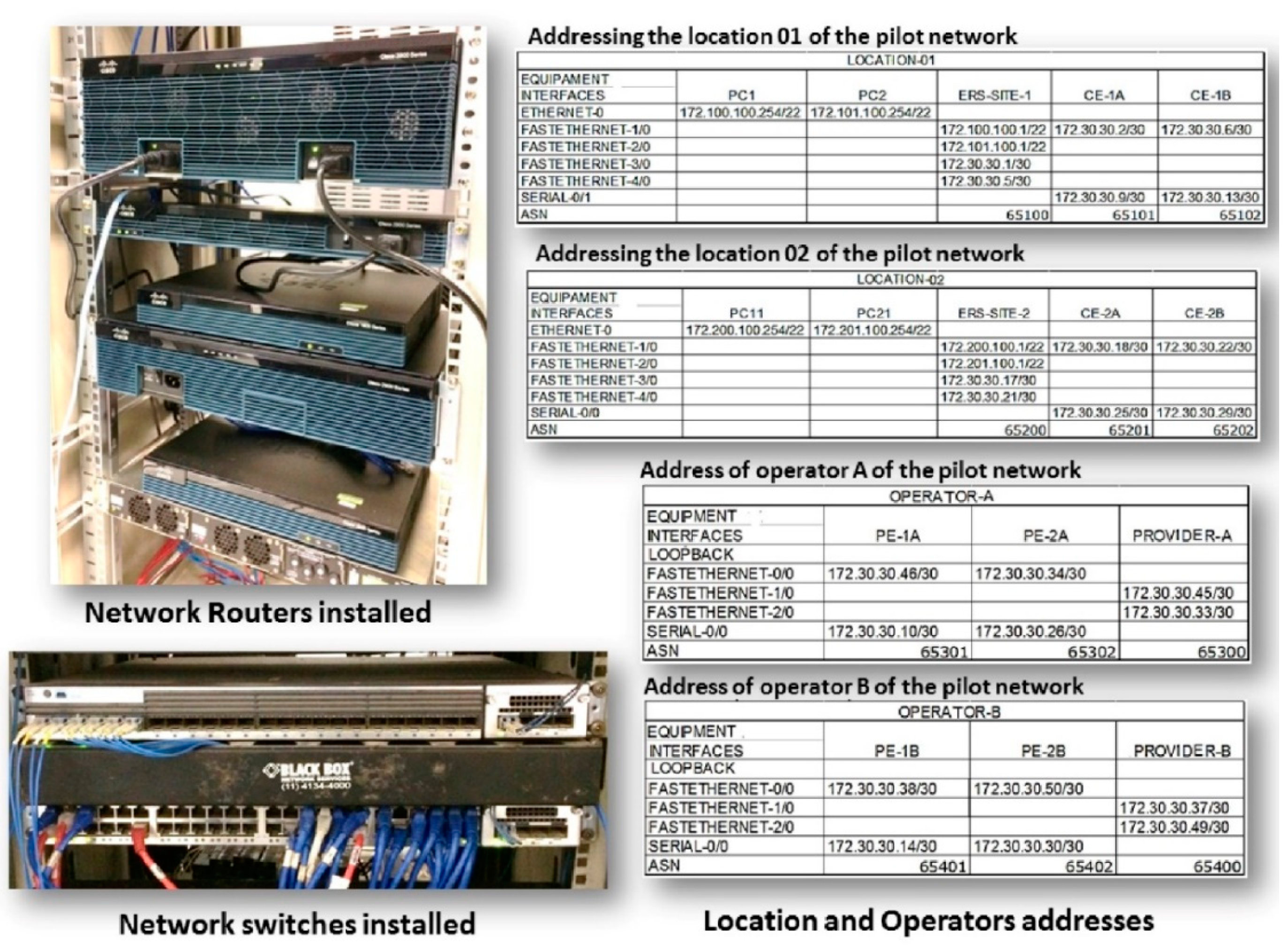
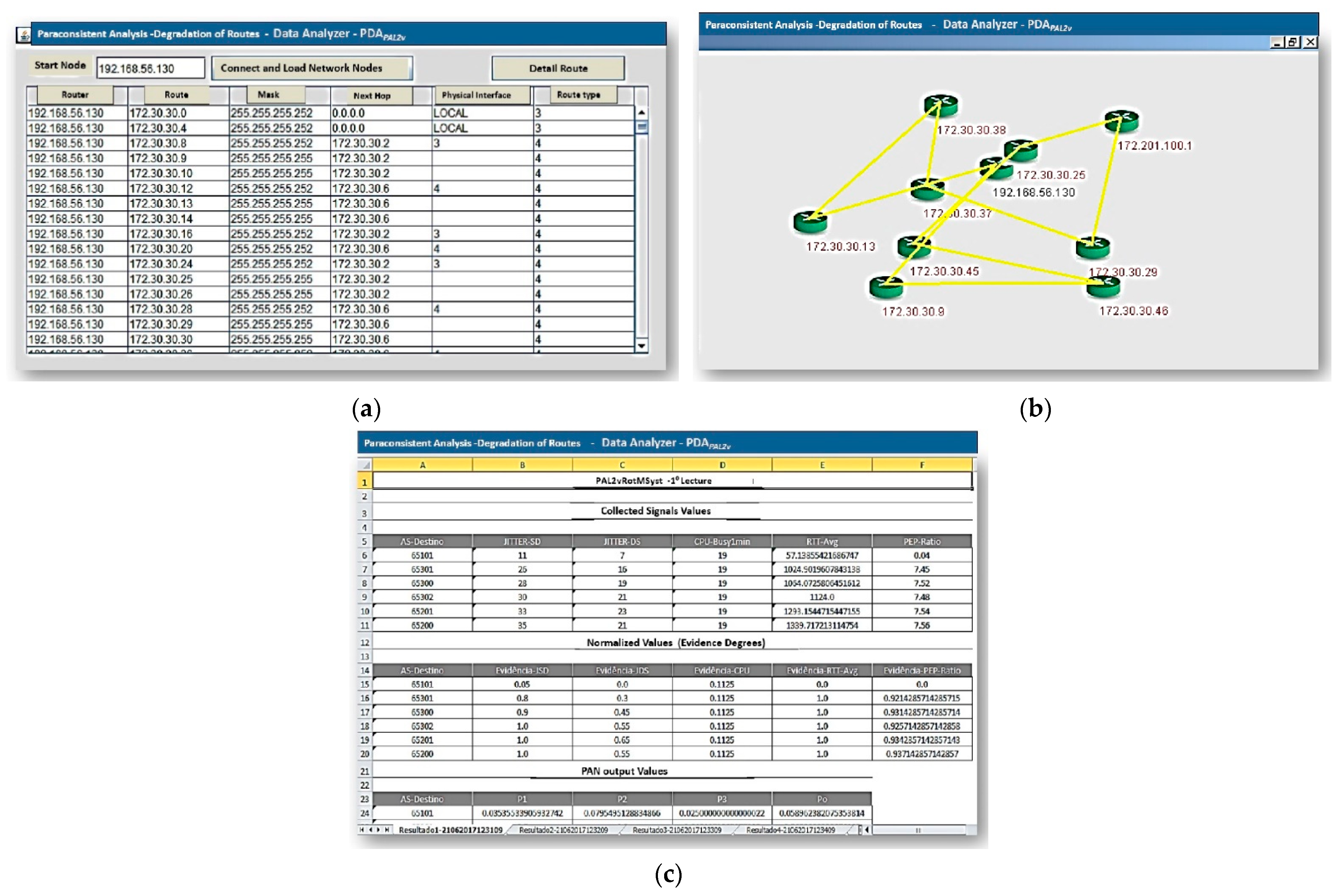


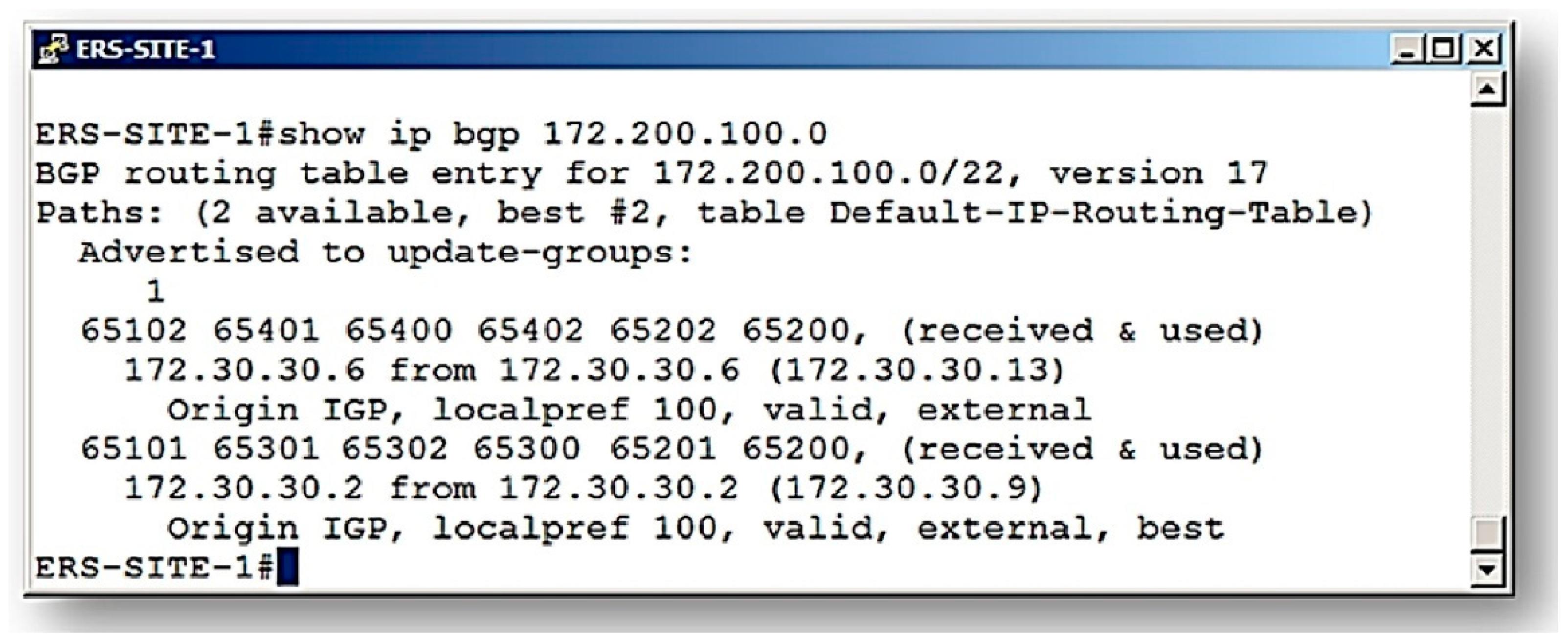

| Symbols/Abbreviations | Meaning |
|---|---|
| μ | Favorable evidence degree |
| λ | Unfavorable evidence degree |
| (μ, λ) | Annotation |
| PL | Paraconsistent logic |
| PAL2v | Paraconsistent annotated logic with annotation of two values |
| USCP | Unit square in the Cartesian plane |
| P | Proposition |
| t | True logical state |
| f | False logical state |
| ⊥ | Paracomplete logical state |
| T | Inconsistent logical state |
| Dc | Certainty degree |
| Dct | Contradiction degree |
| DCR | Certainty degree of a real value |
| μER | Resulting evidence degree |
| PAN | Paraconsistent analysis node algorithm |
| PANnet | Paraconsistent analysis network |
| Gμ | Set of evidence degrees |
| ParaExtrctr | Contradiction effects extractor algorithm |
| V(G) | Cyclomatic complexity |
| PoμE | Resulting initial signal |
| PoμER | Resulting final signal |
| JITTER-SD | Jitter source/destination signal |
| JITTER-DS | Jitter destination/source signal |
| RTT-Avg | Round-trip time signal |
| CPU-Busy1min | Busy CPU processing consumption signal |
| PEP-Ratio | Packet loss ratio signal |
| SNMP | Simple Network Management Protocol |
| BGP | Border Gateway Protocol |
| Collected Signal Values | |||||
|---|---|---|---|---|---|
| ASN-Destination | JITTER-SD | JITTER-DS | CPU-Busy1min | RTT-Avg | PEP-Ratio |
| 65101 | 11 | 7 | 19 | 57.1385421686747 | 0.004 |
| 65301 | 26 | 16 | 19 | 1024.9019607843138 | 7.45 |
| 65300 | 28 | 19 | 19 | 1064.0725806451612 | 7.52 |
| 65302 | 30 | 21 | 19 | 1124.0 | 7.48 |
| 65201 | 33 | 23 | 19 | 1293.1544715447155 | 7.54 |
| 65200 | 35 | 21 | 19 | 1339.717213114754 | 7.56 |
| Normalized Values (Evidence Degrees) | |||||
| ASN-Destination | JSD | JDS | CPU | RTT-Avg | PEP-Ratio |
| 65101 | 0.005 | 0.0 | 0.1125 | 0.0 | 0.0 |
| 65301 | 0.8 | 0.3 | 0.1125 | 1.0 | 0.921428571428715 |
| 65300 | 0.9 | 0.45 | 0.1125 | 1.0 | 0.931428571428758 |
| 65302 | 1.0 | 0.55 | 0.1125 | 1.0 | 0.9257142857142858 |
| 65201 | 1.0 | 0.65 | 0.1125 | 1.0 | 0.9342857142857143 |
| 65200 | 1.0 | 0.55 | 0.1125 | 1.0 | 0.9371428527142857 |
| PAN Output Values | |||||
| ASN-Destination | PAN P1 | PAN P2 | PAN P3 | PAN Po | |
| 65101 | 0.035355339059327 | 0.0795495128834866 | 0.0025000000000022 | 0.0589623820753538 | |
| 65301 | 0.5 | 0.5 | 0.6421079287077212 | 0.5652088232876168 | |
| 65300 | 0.604715292478952 | 0.5 | 0.7163170424432175 | 0.5935052150345818 | |
| 65302 | 0.681801948466053 | 0.5 | 0.7689498243379387 | 0.6105233102780929 | INITIAL RESULT |
| 65201 | 0.752512626584708 | 0.5 | 0.8189359680293476 | 0.6239786018898197 | PAN Po1μ1 |
| 65200 | 0.681801948466053 | 0.5 | 0.7706519888813473 | 0.6110266653071952 | 0.6110266653071952 |
| PAN Output Values | ||||||
|---|---|---|---|---|---|---|
| Reading Intervals | ASN-Destination | PAN P1 | PAN P2 | PAN P3 | PAN Po | |
| 1° | 65200 | 0.681801948466053 | 0.5 | 0.7706519888813473 | PAN Po2μ1 | 0.6110266653071952 |
| 2° | 65200 | 0.679844378812835 | 0.5 | 0.7713192225848801 | PAN Po2μ2 | 0.6112231372887633 |
| 3° | 65200 | 0.675735364805411 | 0.5 | 0.7274113138137706 | PAN Po3μ3 | 0.5973186173680645 |
| 4° | 65200 | 0.717157287525381 | 0.5 | 0.7961568229831409 | PAN Po4μ4 | 0.6181937396949033 |
| 5° | 65200 | 0.858578643762690 | 0.5 | 0.8987022977072239 | PAN Po5μ5 | 0.6392637913309811 |
| 6° | 65200 | 0.823223304703363 | 0.5 | 0.8740849816871129 | PAN Po6μ6 | 0.6354080418901602 |
| 7° | 65200 | 0.776393202250021 | 0.5 | 0.8407254968711602 | PAN Po7μ7 | 0.6289418055432956 |
| 8° | 65200 | 0.717157287525381 | 0.5 | 0.7987690939467289 | PAN Po8μ8 | 0.6188872361419652 |
| 9° | 65200 | 0.929289321881345 | 0.5 | 0.9495024753308189 | PAN Po9μ9 | 0.6446480617753182 |
| 10° | 65200 | 0.858578643766269 | 0.5 | 0.8975603711885854 | PAN Po10μ10 | 0.6391025924511091 |
| Evidence Degrees | 1° Cycle | 1° Cycle Sorted | 2° Cycle Sorted | 3° Cycle Sorted | 4° Cycle Sorted | 5° Cycle Sorted | 6° Cycle Sorted | 7° Cycle Sorted | 8° Cycle Sorted | 9° Cycle Sorted | Result Po μER |
|---|---|---|---|---|---|---|---|---|---|---|---|
| μ1 | 0.6110267 | 0.5973186 | 0.6110267 | 0.6112231 | 0.6181937 | 0.6188872 | 0.6202453 | 0.6234596 | 0.62388090 | 0.6241810 | 0.6242804 |
| μ2 | 0.6112231 | 0.6110267 | 0.6112231 | 0.6181937 | 0.6188872 | 0.6202453 | 0.6238809 | 0.6238809 | 0.62418100 | 0.6243798 | |
| μ3 | 0.5973186 | 0.6112231 | 0.6181937 | 0.6188872 | 0.6202453 | 0.6248794 | 0.6248794 | 0.6248794 | 0.62487940 | ||
| μ4 | 0.6181937 | 0.6181937 | 0.6188872 | 0.6202453 | 0.6248794 | 0.6249038 | 0.6249038 | 0.6249038 | |||
| μ5 | 0.6392637 | 0.6188872 | 0.6202453 | 0.6248794 | 0.6249038 | 0.6267016 | 0.6267016 | ||||
| μ6 | 0.6354080 | 0.6289418 | 0.6289418 | 0.6289418 | 0.6289418 | 0.6289418 | |||||
| μ7 | 0.6289418 | 0.6354080 | 0.6354080 | 0.6354080 | 0.6354080 | ||||||
| μ8 | 0.6188872 | 0.6391025 | 0.6391025 | 0.6391025 | |||||||
| μ9 | 0.6446480 | 0.6392637 | 0.6446480 | ||||||||
| μ10 | 0.6391025 | 0.6446480 | |||||||||
| μMax | 0.6446480 | 0.6446480 | 0.6391025 | 0.6354080 | 0.6289418 | 0.6267016 | 0.6249038 | 0.6248794 | 0.6243798 | ||
| μMin | 0.5973186 | 0.6110267 | 0.6112231 | 0.6181937 | 0.6188872 | 0.6202453 | 0.6234596 | 0.6238809 | 0.6241810 | ||
| μEr | 0.6202453 | 0.6248794 | 0.6249038 | 0.6267016 | 0.6238809 | 0.6234596 | 0.6241810 | 0.6243798 | 0.72348031 |
| Collected Signal Values | |||||
|---|---|---|---|---|---|
| ASN-Destination | JITTER-SD | JITTER-DS | CPU-Busy1min | RTT-Avg | PEP-Ratio |
| 65101 | 3 | 3 | 14 | 16.811 | 0.0 |
| 65301 | 12 | 5 | 14 | 735.8242950108460 | 5.39 |
| 65302 | 12 | 6 | 14 | 745.2255965292842 | 5.39 |
| 65300 | 13 | 7 | 14 | 768.3709327548806 | 5.39 |
| 65201 | 13 | 10 | 14 | 823.9405520169852 | 5.29 |
| 65200 | 13 | 11 | 14 | 829.2415254237288 | 5.28 |
| Normalized Values (Evidence Degrees) | |||||
| ASN-Destination | JSD | JDS | CPU | RTT-Avg | PEP-Ratio |
| 65101 | 0.0 | 0.0 | 0.05 | 0.0 | 0.0 |
| 65301 | 0.1 | 0.0 | 0.05 | 1.0 | 0.6271428571428571 |
| 65302 | 0.1 | 0.0 | 0.05 | 1.0 | 0.6271428571428571 |
| 65300 | 0.15 | 0.0 | 0.05 | 1.0 | 0.6271428571428571 |
| 65201 | 0.15 | 0.0 | 0.05 | 1.0 | 0.6128571428571429 |
| 65200 | 0.15 | 0.05 | 0.05 | 1.0 | 0.6114285714285714 |
| PAN Output Values | |||||
| ASN-Destination | PAN P1 | PAN P2 | PAN P3 | PAN Po | |
| 65101 | 0.0 | 0.03535533905932742 | 0.0 | 0.02500000000002 | |
| 65301 | 0.07071067811865 | 0.5 | 0.446266827842550 | 0.47389560117849 | |
| 65302 | 0.07071067811865 | 0.5 | 0.446266827842550 | 0.47389560117849 | |
| 65300 | 0.10606601717798 | 0.5 | 0.449754468163077 | 0.47554131346953 | INITIAL RESULT |
| 65201 | 0.10606601717798 | 0.5 | 0.439797611152573 | 0.470861943023382 | PAN Po1μ1 |
| 65200 | 0.11180339887498 | 0.5 | 0.439513878028432 | 0.470729459976530 | 0.470729459976530 |
| PAN Output Values | ||||||
|---|---|---|---|---|---|---|
| Reading Intervals | ASN-Destination | PAN P1 | PAN P2 | PAN P3 | PAN Po | |
| 1° | 65200 | 0.11180339887498 | 0.5 | 0.439513878028432 | PAN Po2μ1 | 0.47072945997653 |
| 2° | 65200 | 0.17677669529663 | 0.5 | 0.488997829801953 | PAN Po2μ2 | 0.49452951254248 |
| 3° | 65200 | 0.07071067811865 | 0.5 | 0.450282224424474 | PAN Po3μ3 | 0.47579096336135 |
| 4° | 65200 | 0.11180339887498 | 0.5 | 0.458406735000564 | PAN Po4μ4 | 0.47965442492167 |
| 5° | 65200 | 0.11180339887498 | 0.5 | 0.454427201686533 | PAN Po5μ5 | 0.47775730325796 |
| 6° | 65200 | 0.11180339887498 | 0.5 | 0.450448755834282 | PAN Po6μ6 | 0.47586977295929 |
| 7° | 65200 | 0.11180339887498 | 0.5 | 0.449454317671406 | PAN Po7μ7 | 0.47539940243624 |
| 8° | 65200 | 0.18027756377319 | 0.5 | 0.473077203864576 | PAN Po8μ8 | 0.48672478918600 |
| 9° | 65200 | 0 | 0.5 | 0.337390949880438 | PAN Po9μ9 | 0.42651650206130 |
| 10° | 65200 | 0.03535533905932 | 0.5 | 0.417941383449880 | PAN Po10μ10 | 0.46080093315877 |
| Evidence Degrees | 1° Cycle | 1° Cycle Sorted | 2° Cycle Sorted | 3° Cycle Sorted | 4° Cycle Sorted | 5° Cycle Sorted | 6° Cycle Sorted | 7° Cycle Sorted | 8° Cycle Sorted | 9° Cycle Sorted | Result Po μER |
|---|---|---|---|---|---|---|---|---|---|---|---|
| μ1 | 0.47072945 | 0.42651650 | 0.46080093 | 0.46177687 | 0.47072945 | 0.47080051 | 0.47334193 | 0.47394014 | 0.47425639 | 0.47446341 | 0.47451572 |
| μ2 | 0.49452951 | 0.46080093 | 0.46177687 | 0.47072945 | 0.47080051 | 0.47394014 | 0.47394014 | 0.47425639 | 0.47456802 | 0.47456802 | |
| μ3 | 0.47579096 | 0.47072945 | 0.47072945 | 0.47394014 | 0.47394014 | 0.47425639 | 0.47425639 | 0.47456802 | 0.47467033 | ||
| μ4 | 0.47965442 | 0.47539940 | 0.47539940 | 0.47539940 | 0.47539940 | 0.47539940 | 0.47539940 | 0.47539940 | |||
| μ5 | 0.47775730 | 0.47579096 | 0.47579096 | 0.47579096 | 0.47579096 | 0.47579096 | 0.47579096 | ||||
| μ6 | 0.47586977 | 0.47586977 | 0.47586977 | 0.47586977 | 0.47586977 | 0.47586977 | |||||
| μ7 | 0.47539940 | 0.47775730 | 0.47775730 | 0.47775730 | 0.47775730 | ||||||
| μ8 | 0.48672478 | 0.47965442 | 0.47965442 | 0.47965442 | |||||||
| μ9 | 0.42651650 | 0.48672478 | 0.48672478 | ||||||||
| μ10 | 0.46080093 | 0.49452951 | |||||||||
| μMax | 0.49452951 | 0.48672478 | 0.47965442 | 0.47775730 | 0.47586977 | 0.47579096 | 0.47539940 | 0.47467033 | 0.47456802 | ||
| μMin | 0.42651650 | 0.46080093 | 0.46177687 | 0.47072945 | 0.47080051 | 0.47334193 | 0.47394014 | 0.47425639 | 0.47446341 | ||
| μEr | 0.46177687 | 0.47394014 | 0.47080051 | 0.47425639 | 0.47334193 | 0.47456802 | 0.47467033 | 0.47446341 | 0.47451572 |
Publisher’s Note: MDPI stays neutral with regard to jurisdictional claims in published maps and institutional affiliations. |
© 2021 by the authors. Licensee MDPI, Basel, Switzerland. This article is an open access article distributed under the terms and conditions of the Creative Commons Attribution (CC BY) license (https://creativecommons.org/licenses/by/4.0/).
Share and Cite
Da Silva Filho, J.I.; Abe, J.M.; Marreiro, A.d.L.; Martinez, A.A.G.; Torres, C.R.; Rocco, A.; Côrtes, H.M.; Mario, M.C.; Pacheco, M.T.T.; Garcia, D.V.; et al. Paraconsistent Annotated Logic Algorithms Applied in Management and Control of Communication Network Routes. Sensors 2021, 21, 4219. https://doi.org/10.3390/s21124219
Da Silva Filho JI, Abe JM, Marreiro AdL, Martinez AAG, Torres CR, Rocco A, Côrtes HM, Mario MC, Pacheco MTT, Garcia DV, et al. Paraconsistent Annotated Logic Algorithms Applied in Management and Control of Communication Network Routes. Sensors. 2021; 21(12):4219. https://doi.org/10.3390/s21124219
Chicago/Turabian StyleDa Silva Filho, João Inácio, Jair Minoro Abe, Alessandro de Lima Marreiro, Angel Antonio Gonzalez Martinez, Cláudio Rodrigo Torres, Alexandre Rocco, Hyghor Miranda Côrtes, Mauricio Conceição Mario, Marcos Tadeu Tavares Pacheco, Dorotéa Vilanova Garcia, and et al. 2021. "Paraconsistent Annotated Logic Algorithms Applied in Management and Control of Communication Network Routes" Sensors 21, no. 12: 4219. https://doi.org/10.3390/s21124219
APA StyleDa Silva Filho, J. I., Abe, J. M., Marreiro, A. d. L., Martinez, A. A. G., Torres, C. R., Rocco, A., Côrtes, H. M., Mario, M. C., Pacheco, M. T. T., Garcia, D. V., & Blos, M. F. (2021). Paraconsistent Annotated Logic Algorithms Applied in Management and Control of Communication Network Routes. Sensors, 21(12), 4219. https://doi.org/10.3390/s21124219








